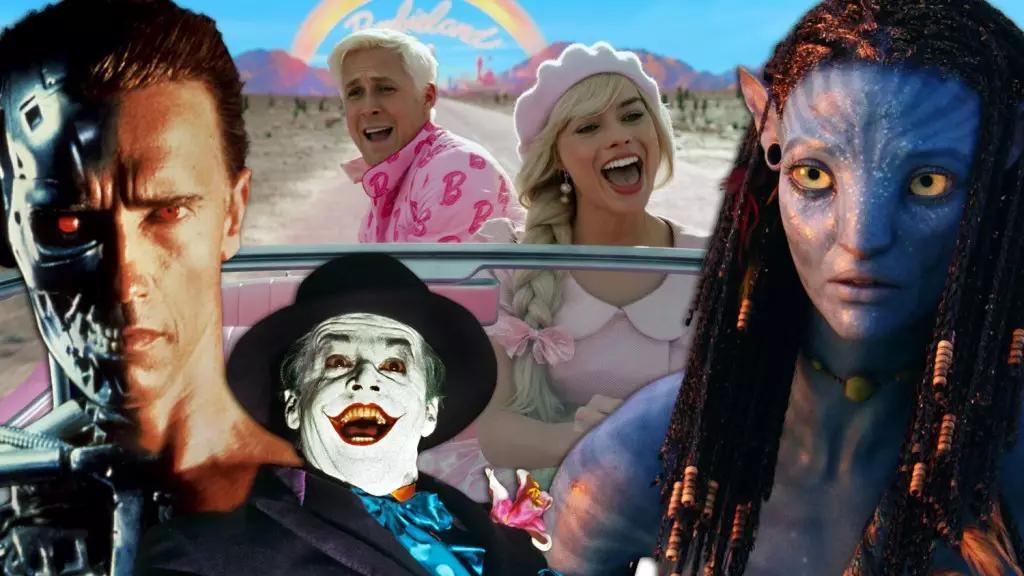The evolution of cinema in North America, defined markedly by its box office performance, reveals intriguing patterns over the decades. From the blockbuster era ignited by films like “Star Wars” and “Jurassic Park,” to the contemporary dominance of superhero franchises and animation, the landscape has shifted dramatically. The data indicating the highest-grossing films since 1977 showcases specific influences that shape audience preferences, marketing strategies under various distributors, and technological advancements in film production.
With “Inside Out 2″—a sequel with a compelling narrative—recently topping the North American box office, one cannot help but analyze the stronghold that animated and franchise-based films maintain over the market. This reflects not only a trend but a cultural shift in film consumption patterns.
Among the most noteworthy trends is the ascendancy of superhero films. Characters from comic books have transitioned from niche markets to mainstream cinema, appealing to broad demographics. Titles like “Avengers: Endgame” and “Spider-Man: No Way Home” have not only shattered box office records but have also highlighted a paradigm shift in storytelling. With these films becoming cultural events, their ability to generate buzz manifests in astronomical viewing figures which, in turn, bolster merchandise sales and other franchising opportunities.
The dominance of major studios, primarily Marvel and DC, emphasizes the importance of an established fan base and intricate marketing strategies. For instance, the release of “Inside Out 2” under Disney’s banner illustrates how sequels capitalize on nostalgia while also tapping into new audiences.
Animation has consistently performed well at the box office, with films produced by major studios like Disney and Pixar leading the charge. The ability of animated films to appeal to children while maintaining themes that resonate with adults has proven lucrative. For example, the $652 million gross of “Inside Out 2” speaks volumes about the engaging storytelling prevalent in these films, which manages to intertwine humor and emotional depth captivating audiences of all ages.
Moreover, technological advancements in animation have significantly enhanced the aesthetic quality of films. Stunning visuals and detailed character designs attract larger audiences, allowing films like “Frozen II” and “Toy Story 4” to thrive amid stiff competition from live-action blockbusters.
Cultural Icons and Franchise Legacy
Cinematic franchises have redefined viewer expectations and set new standards for success. The “Harry Potter” series, along with “Star Wars,” showcases how crafted universes with rich lore can sustain audience interest across generations. The legacy of these franchises demonstrates that familiarity combined with innovation can create significant box office draw.
The ability to continuously engage audiences through merchandising, theme parks, and spinoffs creates an ever-expanding franchise ecosystem. Disney’s acquisition of franchises such as “Star Wars” and “Marvel” illustrates a deliberate strategy to capture a diverse audience and secure a competitive edge in the market.
As we observe the data compiled from over four decades, one revelation emerges: the box office landscape is not only influenced by the quality of films but also by external factors like social media influence and global crises. The COVID-19 pandemic has reshaped consumer behavior, making digital releases and streaming a critical facet of modern film distribution.
Nevertheless, as theaters adapt and emerge post-pandemic, traditional box office revenue remains a critical indicator of a film’s success. As studios navigate these changes, new releases will have to find a delicate balance between theatrical and streaming releases to maximize their audience reach while capitalizing on traditional revenue streams.
The analysis of the highest-grossing films in North America reveals a clear trend toward the dominance of franchises, animation, and superhero narratives. As we move into an era where film consumption continues to evolve, it is essential to recognize how these trends will shape future cinematic endeavors. The ever-present challenge for filmmakers will be how to innovate while embracing the nostalgia that drives so much of today’s box office success. As long as studios can meld exceptional storytelling with appealing aesthetics, the cinematic landscape will undoubtedly continue to thrive, reflecting the tastes and preferences of audiences worldwide.

